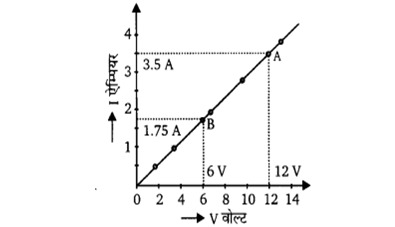NCERT Solutions For Class 10 Science Chapter 12 Electricity in Hindi - 2025-26
NCERT Solutions For Class 10 Science Chapter 12 Electricity in Hindi - 2025-26
FAQs on NCERT Solutions For Class 10 Science Chapter 12 Electricity in Hindi - 2025-26
1. Where can I find accurate, step-by-step NCERT Solutions for Class 10 Science Chapter 12 (Electricity) for the 2025-26 session?
You can find detailed and expert-verified NCERT Solutions for all the in-text and exercise questions of Class 10 Science Chapter 12, Electricity, on Vedantu. These solutions are crafted as per the latest CBSE 2025-26 guidelines, focusing on the correct methodology to help students score better in exams.
2. What is the correct method to solve numerical problems based on Ohm's Law from the NCERT textbook?
To correctly solve numericals on Ohm's Law (V = IR) as per the NCERT solutions pattern, follow these steps:
- First, list all the given values from the problem, such as potential difference (V), current (I), or resistance (R).
- Write down the primary formula: V = IR.
- Rearrange the formula to find the required unknown quantity (e.g., to find current, use I = V/R).
- Substitute the given values into the rearranged formula.
- Calculate the result and write the final answer with the correct SI unit (Volts, Amperes, or Ohms).
3. How do you solve NCERT questions that ask to calculate the total cost of electrical energy consumed?
To solve NCERT problems on calculating the cost of electrical energy, you must follow this method:
- Calculate the total energy consumed in the commercial unit, which is kilowatt-hour (kWh). To do this, convert the power of the appliance from watts (W) to kilowatts (kW) by dividing by 1000.
- Ensure the time of operation is in hours (h).
- Use the formula: Energy (in kWh) = Power (in kW) × Time (in h).
- Finally, multiply the total energy in kWh by the cost per kWh provided in the question to determine the total bill.
4. What is the most common mistake students make when solving NCERT problems on series and parallel circuits?
The most common mistake is misapplying the rules for voltage and current in different circuit combinations. For a correct solution, remember:
- In a series circuit, the electric current (I) remains the same through every resistor, while the total voltage (V) gets divided among them.
- In a parallel circuit, the voltage (V) remains the same across each parallel branch, while the total current (I) gets divided among the branches.
5. Why is showing every step important when solving problems based on Joule's Law of Heating (H = I²Rt) for the board exams?
According to the CBSE marking scheme, marks are awarded for each step in a solution. For problems on Joule's Law of Heating, the typical distribution is:
- 1 mark for writing the correct formula (H = I²Rt).
- 1 mark for correctly substituting the values.
- 1 mark for the final answer with the correct unit (Joules).
6. In NCERT solutions, how does resistivity (ρ) differ from resistance (R), and how is this applied in problems?
Resistance (R) is the opposition to current flow in a specific conductor and depends on its length and area. In contrast, resistivity (ρ) is a fundamental property of the material itself. In NCERT problems, the key is to apply the formula R = ρ(L/A). Questions often involve finding one of these variables or comparing the resistance of two wires, for which you must understand that if the material is the same, the resistivity (ρ) remains constant.
7. What is the systematic approach to finding the equivalent resistance for a complex circuit in an NCERT problem?
To find the equivalent resistance in a complex circuit, you must simplify it systematically:
- Step 1: Identify resistors connected in series (end-to-end) and calculate their sum (R_series = R1 + R2 + ...).
- Step 2: Identify resistors connected in parallel (across the same two points) and calculate their equivalent using the formula 1/R_parallel = 1/R1 + 1/R2 + ...
- Step 3: Redraw the circuit, replacing the simplified group with its single equivalent resistor.
- Step 4: Repeat this process of identifying and simplifying series and parallel sections until you are left with only one final equivalent resistance for the entire circuit.
8. According to NCERT Chapter 12, what device is used to maintain a potential difference across a conductor?
As per the concepts outlined in NCERT Class 10 Science Chapter 12, a cell or a battery (which is a combination of multiple cells) is the device used to maintain a potential difference across a conductor. This potential difference is the driving force that causes electric charges to flow, resulting in an electric current.




















 Watch Video
Watch Video






















